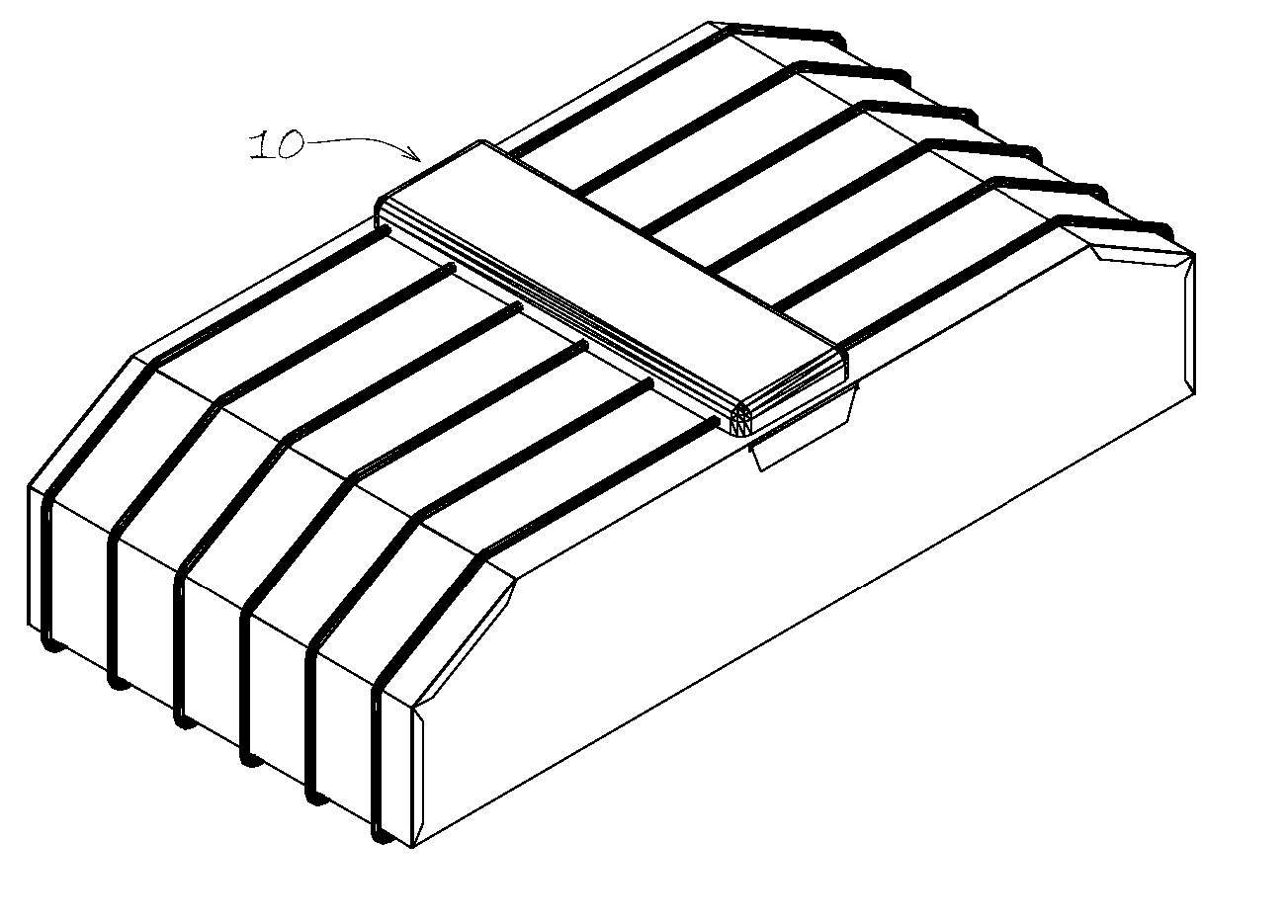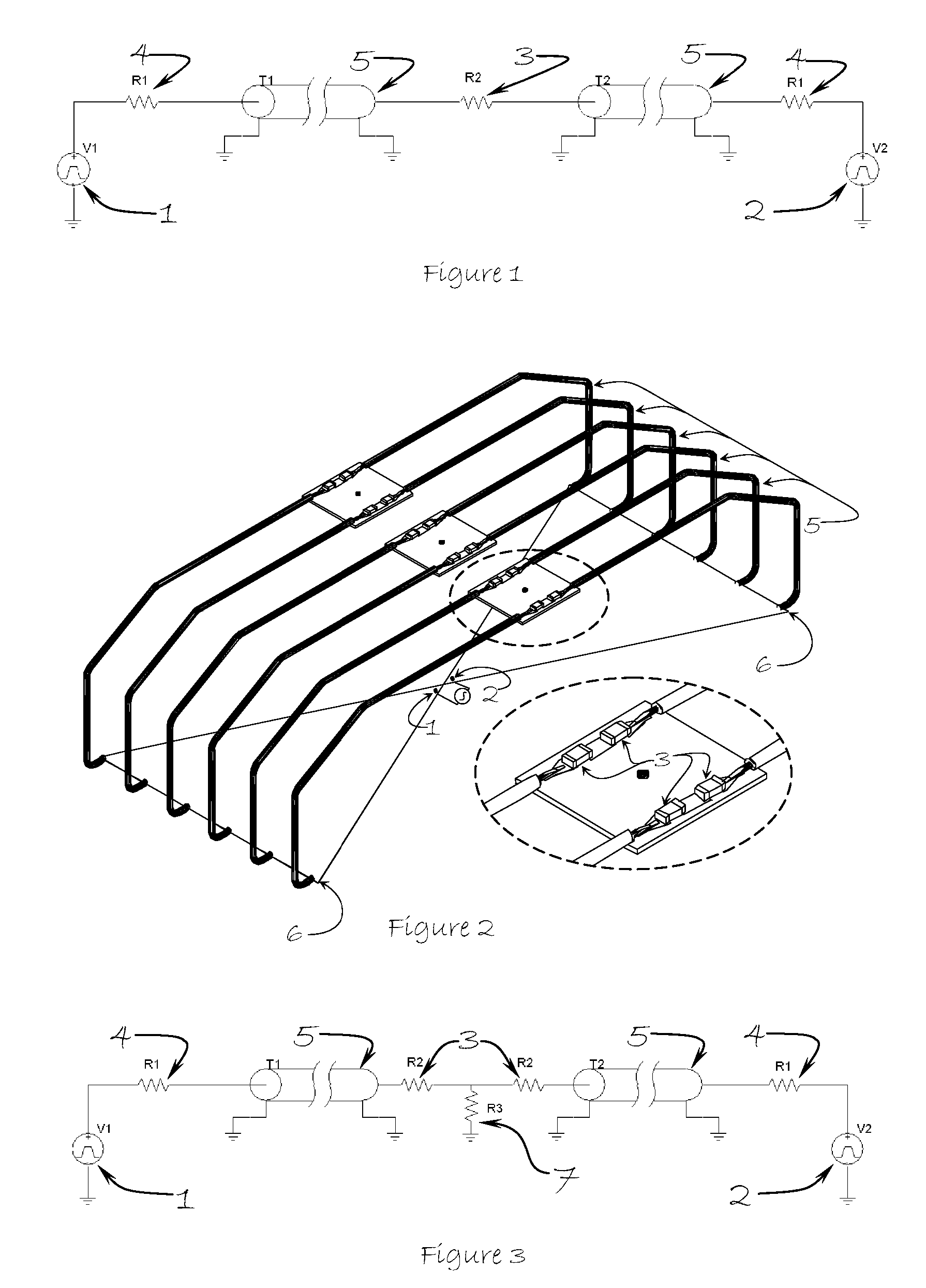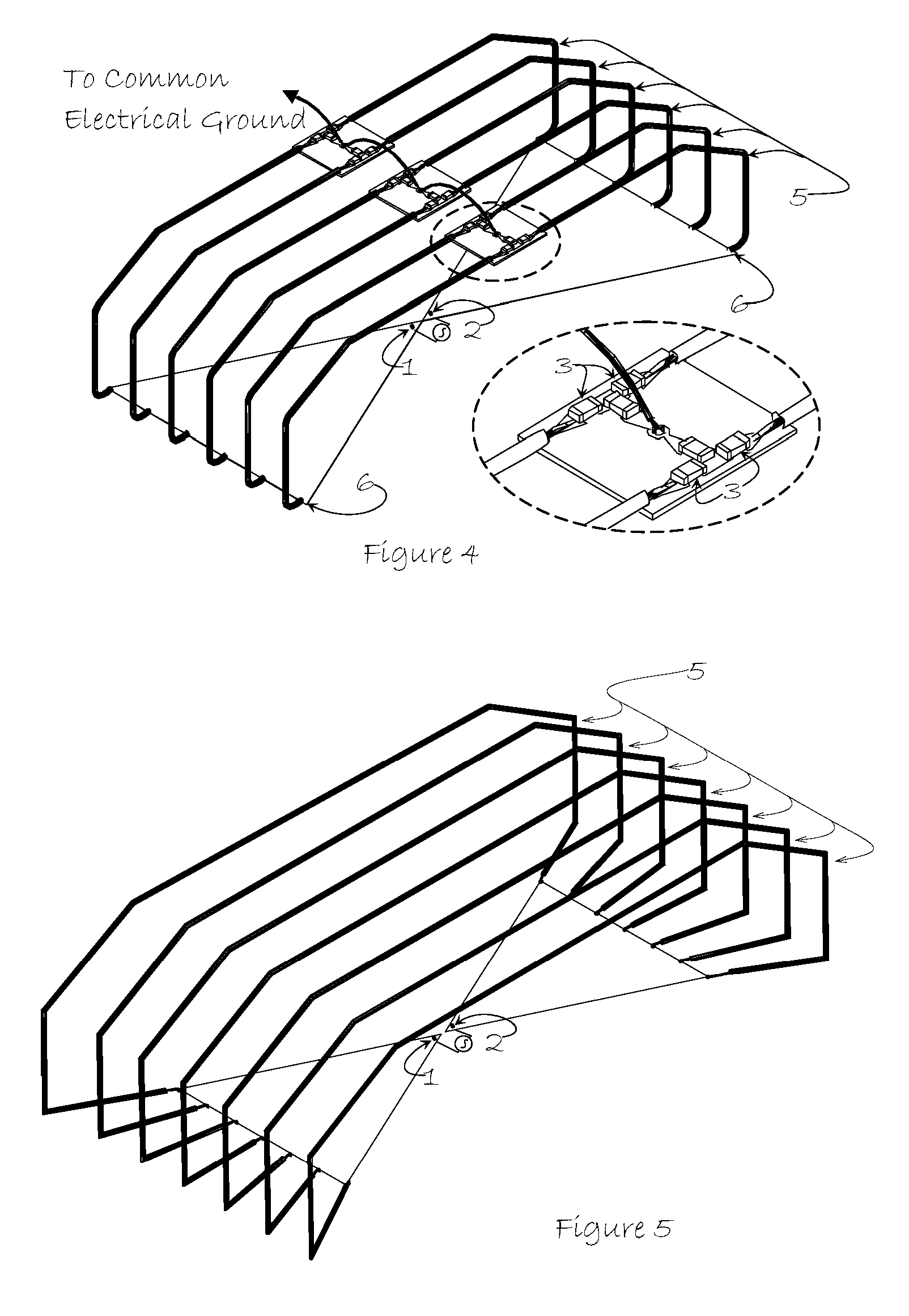A Machine Producible Directive Closed-Loop Impulse Antenna
a closed-loop impulse and machine-produced technology, applied in the direction of antennas, elongated active element feeds, antenna feed intermediates, etc., can solve the problems of reducing radiation efficiency, unable to fully and simultaneously address the problem, and unable to fully and simultaneously solve the problem. , to achieve the effect of reducing the generation of parasitic side-lobes, reducing the generation of antenna ringing and parasitic side-lobes, and reducing radiation efficiency
- Summary
- Abstract
- Description
- Claims
- Application Information
AI Technical Summary
Benefits of technology
Problems solved by technology
Method used
Image
Examples
Embodiment Construction
[0030] Broadband antennae are commonly energized by two matched signal generators to simultaneously couple oppositely polarized impulse signals onto the feed-points of an antenna as illustrated at 1 and 2 in FIGS. 1 through 5. Impedance mismatches at these feed point interfaces, which are typically small, and at the flare-end interfaces that are illustrated at 6 in FIGS. 2, 4, 5 and 6, which are typically large, induce reflections that rapidly deteriorate antenna performance. This is a particularly prominent problem with broadband antennas because it is difficult to design impedance interfaces that are consistent over a wide spectrum.
[0031] The disclosed invention uses broadband shielded cables to smoothly guide the transmitted energy away from the antenna flare end. The matched coax cables direct this energy to an assembly of impedance loads like those shown at 3 in FIGS. 1 thru 4 that facilitate energy cancellation between the oppositely polarized impulses. In an alternative embo...
PUM
 Login to View More
Login to View More Abstract
Description
Claims
Application Information
 Login to View More
Login to View More - R&D
- Intellectual Property
- Life Sciences
- Materials
- Tech Scout
- Unparalleled Data Quality
- Higher Quality Content
- 60% Fewer Hallucinations
Browse by: Latest US Patents, China's latest patents, Technical Efficacy Thesaurus, Application Domain, Technology Topic, Popular Technical Reports.
© 2025 PatSnap. All rights reserved.Legal|Privacy policy|Modern Slavery Act Transparency Statement|Sitemap|About US| Contact US: help@patsnap.com



